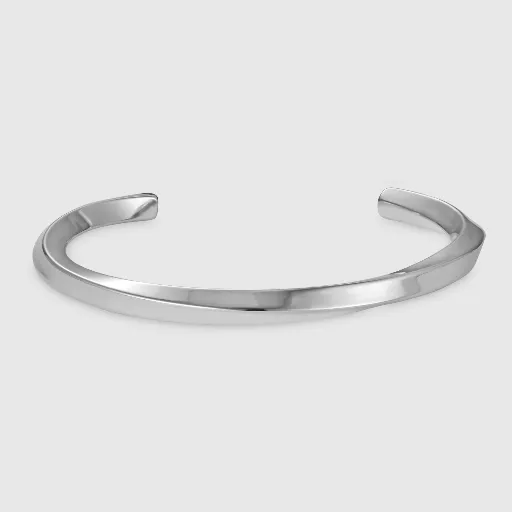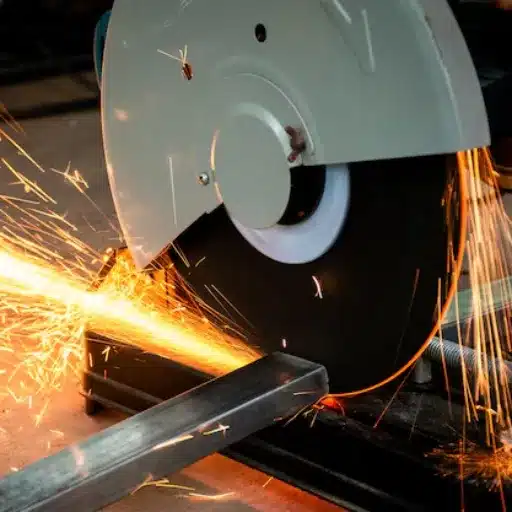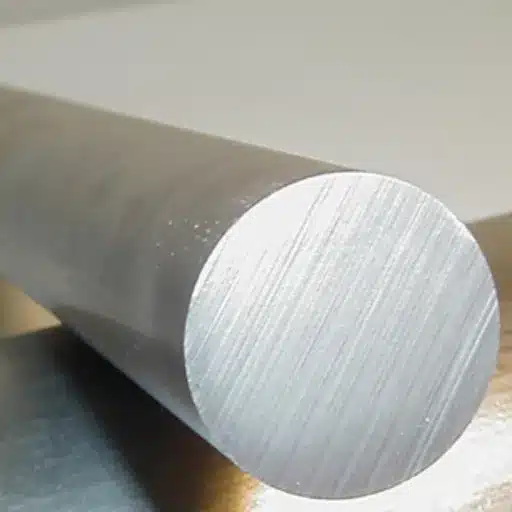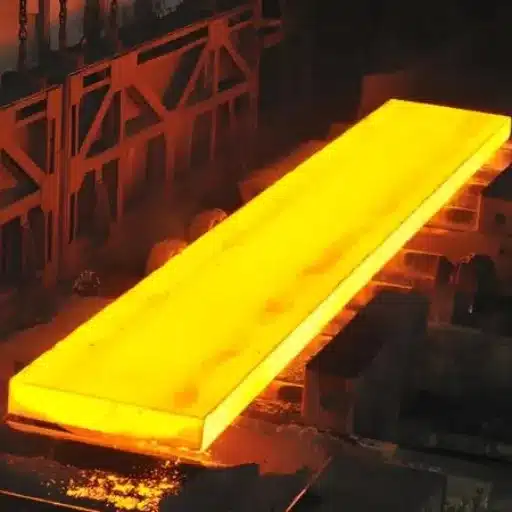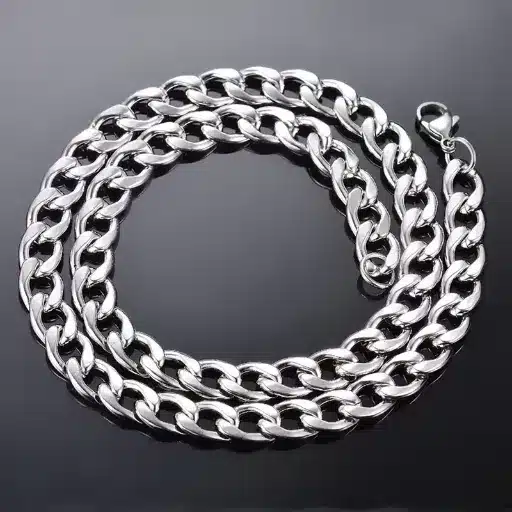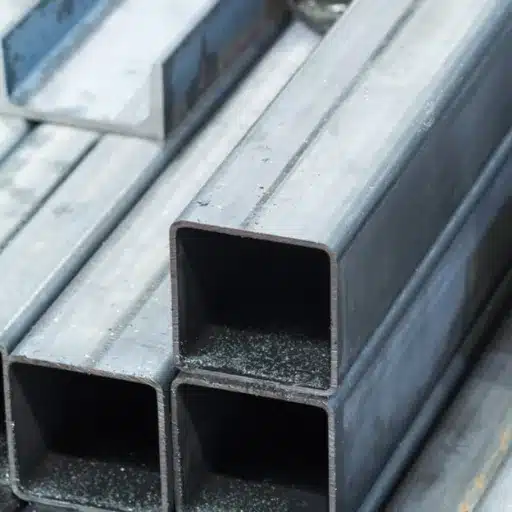Materials that provide an ideal balance between strength, weight, and cost effectiveness have always been sought after by the automotive industry. One of the latest such solutions is DP590, a type of dual-phase steel that is remarkable for its properties and versatile applications. This paper discusses the application of DP590 in the automotive industry, emphasizing its high strength-to-weight ratio, superb formability, and significant impact on safety and efficiency. So, whether an automotive design engineer, a weight-conscious producer, or a curious observer, this blog will explain all the reasons why DP590 coils are revolutionising the motoring industry in terms of design and production.
Introduction to DP590 Steel
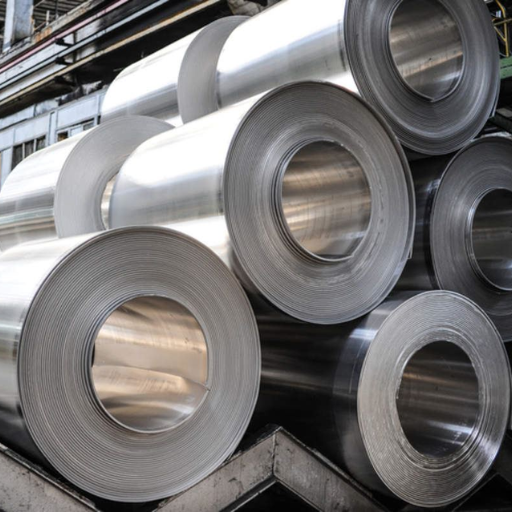
DP590 steel is a point towards practical application for automotive purposes, which is dual-phase high-strength steel. This steel carries the optimum properties by balancing the formability of soft ferritic matrix with the strength of the martensitic phases. It finds applications in making parts of car body panels and structural stiffeners that require energy efficiency and safety. Additionally, DP590 coils also play a vital role in the growing domain of contemporary automotive engineering due to their flexibility and response to challenging requirements.
What is DP590 steel?
Due to its lightweight, it exhibits a combination of strength and ductility, making DP590 coils of high dual-phase strength. This makes them ideal for the automobile industry, where efficiency and safety are highly sought after.
The Composition of Dual-Phase Steel
Dual-phase (DP) steel, exemplified by DP590, consists of two basic phases: ferrite and martensite. The ductile and soft ferrite provides pliability and formability, whereas the hard martensite provides the required balance of strength and toughness. Such balance is only possible due to the careful control of the cooling rate during steel solidification, which requires a precise phase composition that can perform multiple functions.
In its ordinary chemical composition, DP steel is an alloy that contains carbon (C), manganese (Mn), and silicon (Si), with specific grades also containing small amounts of chromium (Cr), molybdenum (Mo), or boron (B), for example. In the case of DP590 steel, a carbon content level of approximately 0.05–0.20% is observed, which enhances strength and helps retain weldability. Manganese content ranging from 1.0 to 2.5 percent induces increased hardenability and toughness. Such Si ranges from 0.50 to 1.0 percent, where it acts as both a deoxidant and a strengthening agent. Additionally, chemical agents such as chromium or molybdenum can be added to enhance corrosion and heat-resistant properties.
Such chemical structures and combination of processes make dual-phase steels one of the most effective new materials for use in industry, from lightweight structures in vehicles to the most complicated structural elements for safety.
Importance of DP590 in Modern Manufacturing
DP590, commonly referred to as dual-phase steel, is one of the latest advancements in steel development for the modern industry. The alloying system in this steel is designed to achieve the required mechanical properties while minimizing production costs. These unique features have made this material the best at serving multiple purposes, with the automotive industry and structural engineering being two of its primary target applications. Detailed Importance of Using DP590 is Outlined Below:
Use of Less Material means Reduction in Weight, yet the Same Strength.
Such a steel composition enables the creation of parts with reduced weight, which is a prerequisite for energy savings in the transportation sector and vehicle efficiency. Traditional steel grades can be extreme, reaching around 590 MPa and above, which also applies to the lighter-weight steels, such as DP steels.
Greater Safety on Collision Impact
DP590 can absorb a significant amount of impact energy, and therefore, it is widely used in various structural components of vehicles, such as frames and impact-absorbing members. Its ductility, however, limits its deformation to some extent, thereby safeguarding the passengers in case of an accident.
Better Firmability
DP has a better forming ability than other strong steels because of its dual structure. This characteristic is desirable to producers as they have the possibility to form complex structures without the probability of rupture or elaborate such structures without problems during the pressing operation so as to minimize wastage and cost during manufacturing.
Promoting Resistance against Corrosion by Adding Alloys
The minimal corrosion or oxidation of DP590, along with the presence of elements such as chromium and manganese, is also a key feature of this grade of steel. It is beneficial, especially in applications that take place outside, where parts are exposed.
Mass manufacture, Low Price Option.
Most brands use aluminum or composites to enhance the strength of their products, as these materials are both affordable and efficient. However, DP590 is less expensive since it is made of steel and can be integrated within the existing framework of steel production plants. This makes it a feasible option on a mass scale.
These performance considerations continue to drive the increasing adoption of DP590 coils across various industries, enabling advanced and efficient production techniques.
Applications of DP590 Coils
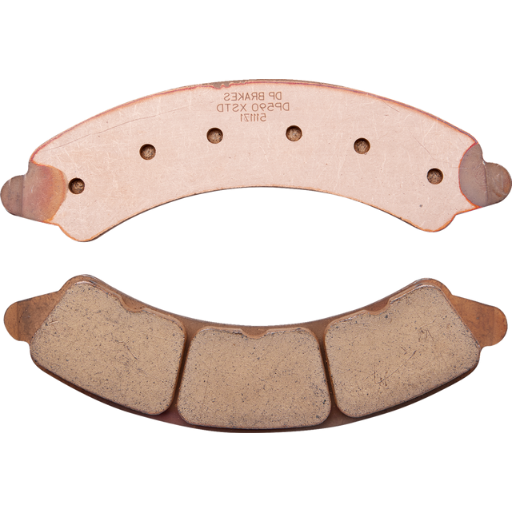
| Application Area | Key Uses | Key Benefits |
|---|---|---|
| Automotive Industry | Chassis frames, crash rails, body panels | High strength-to-weight ratio, safety |
| Construction | Building frameworks, reinforcements | Lightweight, durable, and seismic resistance |
| Industrial Equipment | Machinery frames, storage systems | Robust performance, long-lasting strength |
| Infrastructure | Bridges, structural components | High fatigue strength, durability |
| Transportation | Vehicle chassis, structural elements | Energy absorption, weight reduction |
Automotive Industry Utilization
The necessity of DP590 coils in automobile manufacturing is driven by the inherent properties of the materials, which offer excellent strength levels and perfect ductility at relatively low costs. Due to the above-described properties, it is easy to see why DP590 is widely preferred when making car components that must be both lightweight and robust, thereby increasing fuel economy without compromising current environmental standards.
In the automotive industry, one of DP590’s most common applications is the manufacture of BIW, i.e.. These vehicle structural members include side impact beams, load-bearing elements, shock absorbers, and crash absorbers, among others. Recent reports indicate that these parts can be used to replace traditional steel parts, resulting in a 20%–30% weight reduction with comparable or superior resistance to impact and structural performance. In addition, however, one characteristic of DP590 that confers a significant advantage to manufacturers is its ability to be formed into very sophisticated shapes during processing without any loss in material properties.
The attention that EVs have garnered has further increased the demand for DP590 steels. Their lightweight characteristics help maximize distances and fuel efficiency for Electric Vehicles (EVs), as vehicle weight is one of the key design considerations in making a battery efficient. The same industrial experts also estimate that the global total production of electric vehicles will increase by over 35 percent by 2030. Steels like DP590, which fall within the category of advanced high-strength steels, are expected to play a crucial role in meeting these challenges.
DP590 can also be implemented in automobile manufacturing, as it is compatible with hot stamping and laser welding, which are modern manufacturing processes. Automakers benefit from this in terms of not only increasing throughput but also meeting some of the most stringent safety and environmental standards worldwide. In light of all the above changes, the progress that has been made towards a “greener” car industry is yet another reason why DP590 will not cease to be one of the most essential materials within future automotive applications.
Other Industries Benefiting from DP590 Steel
The DP590 type of coil – amply known and recognized as a double well through a range of sectors – exhibits high rigidity, Alta bracing and structural performance. The following 5 sectors use DP590 coils extensively:
- Construction Section
DPs are used extensively on the construction section, as well as all the hauling projects, throughout the building process. Despite this, high structural performance supports demolition by using relevant, increasing-scale integration, for example, 10-15% in the core of such projects.
- Aeronautical Applications
It is indeed correct that the DP590 steel results in comparatively light materials, although components such as landing gears, seat frames, and gussets are robust and resistant. This saves fuel or permits fuel to be used more efficiently in recent aviation.
- Energy Sector
DP590 is suitable for a broader spectrum of applications, including the construction of pipelines, wind turbine towers, and marine rigs. The material is very durable and rugged, as well as corrosion-resistant, making it most suitable for harsh environments, especially during long explorations in the energy sector or for safety reasons.
- Supporting Equipment Manufacture
The DP590 steel is used in the manufacturing of appliances, including both commercial and domestic products such as washing machines, refrigerators, and ovens. Such performance greatly helps increase the equipment’s lifespan, thereby decreasing the high costs associated with servicing it.
- Rail Transport Industry
The use of DP590 steel is becoming increasingly popular for encapsulating train carriages, rails, and other safety elements on trains. This material is more protective while reducing weight, compared to doubling the train’s efficiency through the presence of wings and lower energy usage.
All of the industries mentioned above utilize the beneficial characteristics provided by DP590 coils to enhance various areas, including efficiency, environmental sustainability, and safety, among others.
Case Studies of DP590 in Action
I have had the opportunity to witness the benefits of DP590 coils in various industries. Even in automobile manufacturing, car frame sections made of it are used because they possess both strength and lightweight characteristics, resulting in increased fuel savings and enhanced passenger safety in the event of a collision. Again, in civil engineering, the use of DP590 in structural elements is everyday in high-rise buildings due to its advantage of combining strength with reduced weight, thereby reducing material consumption. These are just a few examples of many cases that illustrate the growing role of DP 590 steel in promoting sustainability in various applications.
Manufacturing Processes of DP590 Cold Rolled Steel Coils
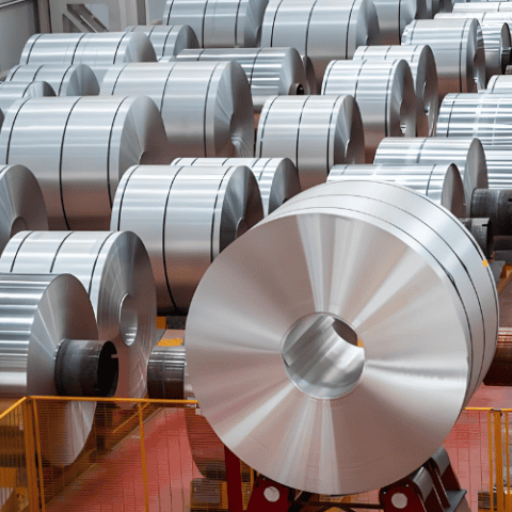
Manufacturing DP590 coils through cold forming is accomplished in the following crucial steps.
- Hot Rolling – where the steel is processed at elevated temperatures to a specific thickness while removing impurities.
- Pickling – Steel, which has undergone hot rolling, is placed in an acid bath to remove scale and other impurities, thereby achieving a clean surface for the next process.
- Cold Rolling – to achieve a controlled thickness of steel strip and improved surface roughness, and also mechanical properties, increasing strength, as the steel passes through the rolls at room temperature.
- Annealing – Steel is heated under suitable conditions to regain its ductility and resolve wear-strength issues.
- Surface Treatment – Surface finishes or protective coatings are applied to the surface to enhance resistance and make the steel ready for use.
Each of these stages is essential in ensuring that DP590 coils meet the specifications in terms of their strength, formability, and durability.
Overview of Cold Rolling Techniques
Cold rolling involves deforming steel by passing it between rollers at a temperature below its recrystallization temperature. This method utilizes the process of strain hardening to make the material firmer and more rigid than before, while also introducing tighter dimensional tolerances and a better finish. Explained below are the pros and cons of cold rolling practices:
- An Efficient and State-of-the-Art Process
Modern cold rolling mills can accurately control the thickness and flatness of steel sheets. This is achieved by using a combination of Automatic Gauge Control (AGC) technology and flatness control systems, which together allow consistent production. Depending on the application, AGC is capable of controlling thickness tolerances to within ±0.001inches in some cases.
- Better Appearance and Performance of Surfaces
In cold rolling, bending as opposed to stretching of the material results in pronounced improvements in aspect ratio, deformation is enhanced, and hence smoothed out in case of finished surfaces. The effective medical surface roughness can range from 0.5 to 2.0 µm, which is adequate for sectors such as the automotive and electronics industries, where the use of certain materials up to a specific standard is required. Such enhancement can be achieved by rolling and other operations, such as skin-passing, where much finer and marginal undesirable surface features are removed.
- Load-Bearing Growth Capabilities of the Material
The process contributes to the increase of tensile and yield strength due to deformation strengthening, which occurs during deformation. For example, the cold-rolled DP590 steel had an average yield strength of about 340 MPa, whereas the tensile strength was 590 MPa. This enables its use in high-strength industrial devices, such as machinery and automobiles.
- Increased savings in energy use
Many of the new cold rolling plants utilize energy-efficient systems, such as regeneration brakes in the rolling stands and optimal lubrication methodologies, which collectively result in lower overall energy consumption. Studies show that the energy consumption of a new plant can be as much as 15% lower than that of an old one.
- Versatile and suitable for several applications
It is possible to manufacture thin steel and steel strips through the cold rolling process in any desired shape or size, with specific characteristics, which explains the widespread use of this process in many sectors. These materials are extensively used in automobile body exteriors, domestic appliances, and other structural parts.
The development of cold rolling technology is not stagnant, particularly in terms of resource efficiency and product quality improvement. Incorporating artificial intelligence and the Internet of Things into the latest models of milling machines will further optimize the production process and enhance production output in the years to come.
Heat Treatment and Annealing Processes
| Process | Key Purpose | Key Parameters | Key Benefits |
|---|---|---|---|
| Annealing | Reduce hardness, increase ductility | Heat above the recrystallization temperature | Relieves stress, improves machinability |
| Normalizing | Refine grain structure | Heat above critical temperature, air is cooled | Improves toughness, machinability |
| Recrystallization Annealing | Restore ductility in cold-worked metals | Heat below the melting point | Removes dislocations, refines grains |
| Sub-Critical Annealing | Soften material, improve toughness | Heat below the critical temperature | Spheroidal carbide distribution |
| Soft Annealing | Maximize softness | Heat near A1 temperature | Enhances formability |
| Solution Annealing | Dissolve alloying elements | Heat to solution temperature, quench | Homogenizes structure |
| Stabilize Annealing | Form stable carbides | Heat to 900-950°C | Prevents carbide precipitation |
| Precipitation Hardening | Strengthen alloys | Heat to 480-790°C | Improves strength, hardness |
Quality Control Measures in Production
Effective quality management in manufacturing ensures that products conform to all applicable expectations and criteria. Below are five quality controls commonly applied in production.
- Dimensional Accuracy Testing:
This involves measuring product dimensions with calipers, micrometers, laser measuring instruments, among others, to determine if they meet the required accuracy. Even in low-volume, high-precision machining, tolerances can go as high as ±0.01 mm.
- Surface finish inspection.
This visual inspection can also be enhanced by, for example, profilometers to examine the quality of processed surfaces. Roughness, Ra for instance – requirements are often within 0.1–1.0 μm, depending on the requirement.
- Tensile strength test.
Examples include testing products to withstand tensile stress. A threshold strength value is typically set for products such as high-quality steel sheets used in the automotive sector, exceeding 500 MPa.
- Non-destructive testing (NDT):
Nondestructive techniques include, for example, the use of ultrasonics or X-rays to inspect defects without interfering with the product. These analytical tools are particularly important in components such as airplane construction, where quality cannot be compromised.
- Sampling and Statistical Analysis:
Selected items are drawn from the production batch and then subjected to stringent testing to ensure that the products are still within specification. They employ statistical tools, which in most cases are quality control Six Sigma techniques, that target less than 3.4 defects per million units produced.
These steps are taken to avoid product reliability issues, customer dissatisfaction, and scrap due to product quality, as well as prevent out-of-control sheeting, such as DP590 coils.
Benefits of Using DP590 Steel Coils
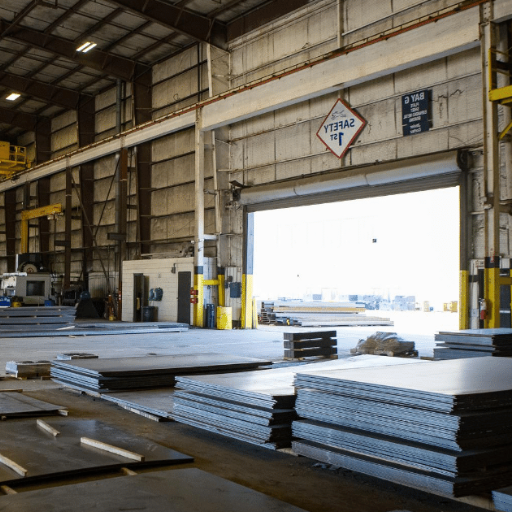
| Benefit | Key Details |
|---|---|
| High Strength | Combines ferrite and martensite for strength |
| Lightweight | Reduces weight while maintaining durability |
| Excellent Formability | Ideal for shaping complex parts |
| Crash Resistance | Absorbs energy during impacts |
| Weldability | Compatible with most welding methods |
| Cost Efficiency | Long-lasting and easy to process |
| Seismic Resistance | Superior energy absorption in construction |
| Fatigue Strength | Durable under cyclic loading |
| Corrosion Resistance | Enhanced with galvanization |
| Versatile Applications | Used in automotive, construction, and more |
High Strength and Durability
The impressive mechanical characteristics of DP590 coils, including high strength and durability, make them indispensable for certain applications. Below is a list of the five key strengths and durability benefits associated with them:
- High Tensile Strength
The tensile strength of DP590 steel coils is approximately 590 MPa, enabling the material to withstand excessive forces without deformation or fracturing.
- High Yield Strength
The average yield strength of DP590 steel coils is approximately 340 MPa, which helps prevent disintegration of the assembly even under extreme stress conditions. Hence, they are perfect for use in structural and automotive components.
- Excellent Formability
In the manufacturing process, even though DP590 steel coils are robust, they can be easily bent or bucked into very complicated shapes yet remain strong over the long run.
- Resistance to Fatigue
These coils have relatively good tensile strength, ensuring they remain effective in components subject to cyclic loading for an extended period.
- Corrosion Protection
DP590 steel has a common approach in practice, which involves applying finishes such as coatings to the material to combat the adverse effects of corrosion caused by weathering.
Weight Reduction and Fuel Efficiency in Automotive Design
Automotive inclusivity has placed a premium on designing aerodynamic cars and utilizing lightweight materials in the construction of automobiles. Authorities have imposed vehicle standards regarding vehicle weights, and as such, PREMIUM grades of steel, such as the DP590, have been the preference of manufacturers. For instance, the 25% weight reduction of the motor vehicle side panels through steel replacement translates to a lower energy potential due to a lighter weight structure, resulting in lower fuel consumption without compromising structural strength.
The International Council on Clean Transport (ICCT) 2023 report elaborates that when the weight of a vehicle is lowered by 10%, consumption will also decrease by approximately 6-8%; however, this greatly depends on the type of engine design in the vehicle. Due to this fact, when trying to achieve economic fuel consumption and lowered carbon emission levels, lightweight construction steps are taken in these technologies. Besides this, with advancements in technology, such as CAD and analysis, most car products can be designed in a way that preserves the strengths of crash parts and lightens other less significant areas.
With all due respect to the latest technology and the use of materials such as DP590 coil, aluminum, and fiberglass, among others, these will largely determine the automotive industry of the future. There is a shift towards this weight-loss practice to enhance the efficiency of cars and comply with environmental and social regulations, which have been challenging to follow.
Cost-Effectiveness Compared to Other Materials
| Parameter | DP590 Steel Coils | Low-Carbon Steel | Aluminum | High-Strength Alloys |
|---|---|---|---|---|
| Initial Cost | Higher than low-carbon steel | Low | High | Very High |
| Strength-to-Weight Ratio | Excellent | Moderate | Excellent | Superior |
| Durability | High | Moderate | Moderate | Very High |
| Formability | Good | Excellent | Moderate | Moderate |
| Crash Resistance | High | Low | Moderate | High |
| Maintenance Cost | Low | Moderate | High | Low |
| Lifespan | Long | Short | Moderate | Very Long |
| Applications | Automotive, structural | General construction | Aerospace, lightweight designs | Specialized industries |
Selecting the Right DP590 Steel Coil
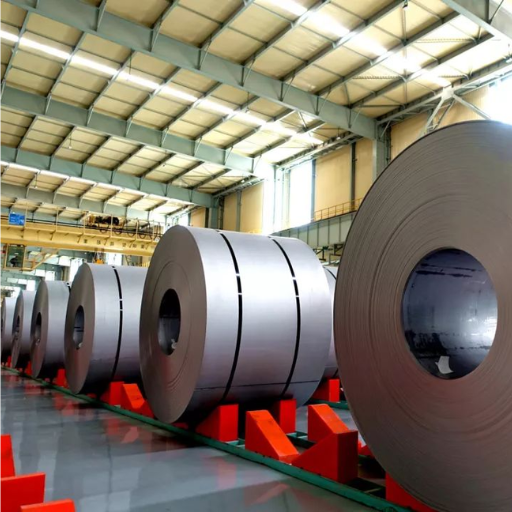
When deciding on the DP590 coils, there are three essential attributes to keep in mind:
- The intended Use –determine the mechanical characteristic, for example, in your case, if it is a strength, elastic characteristic, etc, for the design of a product to be able to use the DP590.
- Quality of suppliers – ensures that they are providing the raw material, especially well-known firms that offer good services and consideration in business.
- Price – Consider how much the DP590 costs within the limits. If needed, it has a reasonable cost.
Combining all these factors will help you make the right choice of DP590 steel coil for your application.
Key Considerations for Customization
Several considerations must be taken into account when modifying DP590 steel coils for specific purposes to achieve maximum effectiveness. These include the following:
- Thickness Variants
One of the key issues now is modifying the thickness of DP590 coils according to their specific applications. To a certain extent, strength may be boosted by increasing thickness; however, flexibility and weight reduction will be enhanced with decreased thickness. The operational requirements will determine the appropriate thickness.
- Width Restrictions
The width of the coil must be adjusted to fit the intended machine and the final product. There should be an accurate assessment and strict tolerances to minimize waste and increase efficiency in processing.
- Paint or Coatings
Decide the coating options based on the service and working conditions at hand. Coatings, such as galvanized coatings or organic ones, can be crucial since they prevent corrosion and extend the steel’s lifespan in the long run.
- Acceptance Levels of Strength and Hardness
This requires changes in the composition of the heat treatment or an expansion of the heating process to achieve the required level of strength and hardness in the material. Such changes are necessary due to the stresses and weights in each specific case.
- Features for Welding
The performance of the weldability in DP590 steel coil manufacture should also be considered. These may include modifications in the cost of sealing without sacrificing the integrity and/or efficiency of the finished acceptable item during welding.
Choosing a Reliable Supplier
My criteria for selecting a suitable vendor are clear; I seek out those with a proven history of supplying good-quality DP590 coils that conform to the required specifications. I also evaluate the frequency of late deliveries by suppliers, whether there is a dedicated staff member to assist with queries, and whether correspondence is handled effectively. Furthermore, I consider only those suppliers who have distinguished themselves over time by upholding the quality of their products and offering a fair level of pricing, meeting my application demands.
Understanding Mechanical Properties for Specific Needs
The use of DP590 steel coils in dedicated applications requires an understanding of its mechanical properties to ensure a suitable fit for the purpose. DP590 is one of the dual-phase steels that offers an excellent balance between strength and ductility, making it ideal for the automotive and construction industries. The tensile strength is typically around 590 MPa, while the yield strength is known to lie within the range of 340–400 MPa. Such characteristics make this material suitable for utilization, allowing for its deformation, which is helpful in certain instances, such as ensuring the safety of specific parts.
Furthermore, according to the findings, the DP590 alloy exhibits a high percent elongation of greater than 20 percent in most cases, which enhances its capability to form without compromising rigidity. Additionally, its dual-phase microstructure (ferrite-martensite) ensures good welding capabilities and resistance to fatigue fractures. Due to these properties, DP590 is also suitable for creating bang panels and structural reinforcement, as well as for use in high-performance designs.
Due to technological advances, heat treatment and coating technology have further modified the properties of DP590, allowing for enhanced corrosion protection and increased material durability even in unfavorable environments. Moreover, DP590, which is both lightweight and strong, is ideal for businesses seeking to reduce fuel consumption and emissions in their vehicles. This comprehensive appreciation of mechanical properties leads to more accurate decisions being taken as well as fitting the material to the requirements of the task at hand more appropriately.
References
- AIP Publishing: “Johnson‐Cook strength models for mild and DP 590 Steels”
Link to article - Taylor & Francis Online: “Influence of processing temperature on formability of thin-rolled DP590 steel sheet”
Link to article - SpringerLink: “High temperatures deformation and formability behavior of DP590 steel: Mechanical characterization and modeling”
Link to article
Frequently Asked Questions (FAQ)
What are DP590 steel coils and their applications?
DP590 steel coils are a type of dual-phase steel known for their high-strength properties and excellent ductility. They are commonly used in the automotive industry for manufacturing components that require a combination of strength and formability. The unique microstructure of DP590, comprising a ferrite matrix with martensite islands, enables it to absorb high energy during impacts, making it ideal for safety-critical applications.
How does the thickness of DP590 coils affect their mechanical properties?
The thickness of DP590 coils can significantly influence their mechanical properties, including tensile strength and ductility. Generally, thicker coils exhibit higher strength due to their increased material volume, while thinner coils offer better formability. The selection of thickness should align with the specific requirements of the application, such as weight reduction in automotive designs.
What are the benefits of using dual-phase steel like DP590?
Dual-phase steel, including DP590, offers several benefits such as a superior strength-to-weight ratio, excellent ductility, and improved work hardening capabilities. These properties make DP590 particularly suitable for demanding automotive applications, where both strength and weight savings are critical for performance and fuel efficiency.
Are there any specific standards for DP590 steel?
Yes, DP590 steel is subject to various industry standards, including ASTM and JIS. These standards ensure that the steel meets specific mechanical properties and quality requirements necessary for its intended applications, particularly in the automotive sector. Compliance with these standards helps manufacturers maintain consistency and reliability in their products.
How is DP590 steel coil manufactured?
DP590 steel coils are typically manufactured through a controlled cooling process following hot rolling, which helps achieve the desired dual-phase microstructure. This involves intercritical annealing, where the steel is heated to a specific temperature to transform the microstructure into a combination of ferrite and martensite, optimizing the mechanical properties for high-strength applications.
What is the corrosion resistance of DP590 steel?
DP590 steel coils can be treated to enhance their corrosion resistance, often through galvanization or other surface treatments. While the base material provides a strong foundation, adding corrosion-resistant coatings helps protect the steel from environmental factors, extending its lifespan in automotive and other applications.
Who are the leading suppliers of DP590 steel products?
Leading suppliers of DP590 steel products, including coils and sheets, are often specialized steel manufacturers and distributors. Companies like Metal Zenith offer a range of advanced high-strength steel products, including DP590, tailored for various industries. It is essential to choose a reputable supplier that can provide high-quality materials consistent with industry standards.
What distinguishes DP590 from other high-strength steel grades?
DP590 differs from other high-strength steel grades primarily due to its unique dual-phase microstructure, which imparts a combination of high strength and excellent ductility. This distinction enables DP590 to perform better in applications that require significant deformation while maintaining structural integrity, making it a preferred choice in the automotive industry compared to other grades, such as DC01 or DC04.

